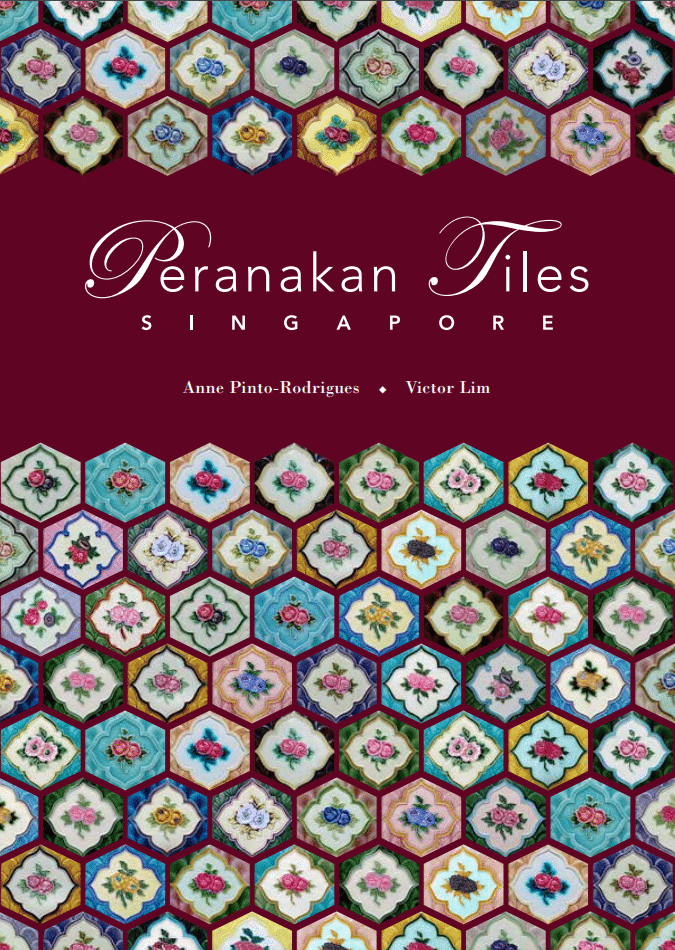Peranakan Tiles: Singapore
Following Anne’s article about the Peranakan tiles of Singapore, in the Mar-Apr’15 issue of PASSAGE (the bi-monthly magazine of the Friends of the Museums Singapore), she collaborated with one of Singapore’s leading tile collectors, to bring out the first ever book on the decorative tiles seen in the heritage precincts of the city-state. The aim of the beautiful 200-page book was to document this fragile legacy and create awareness for its conservation.
The book explores the origins of the Peranakan community briefly, as well as the different types of tiles that came to Singapore in the late-19th / early-20th century. It also showcases some of the exquisite tiles that can be seen in the conserved areas of Katong, Chinatown, Emerald Hill and Little India. Many century-old buildings and shophouses in these places are adorned with English, Belgian or Japanese tiles. Interestingly, several tombs in the Bukit Brown (Chinese) Cemetery are also decorated with these tiles.
In the early part of the 20th century, decorative tiles known as maiolica or majolica tiles across the world, found favour with the affluent Peranakan community of Singapore. The Peranakans decorated their houses, furniture and other surfaces with these colourful tiles. Soon enough, these tiles became a distinctive feature of the Peranakan community and began to be known locally as ‘Peranakan tiles’.
Based on availability, preferences shifted from English and Belgian tiles at the turn of the century to Japanese relief moulded tiles post-World War I. Japanese tiles were specifically made for Chinese-origin customers and had designs of fruits, flowers, birds and animals, considered auspicious as per Chinese symbolism. If you walk around Singapore’s preserved areas today, you cannot miss the colourful tiles that decorate the building and shophouse facades.
The book is currently sold out.

